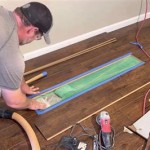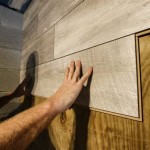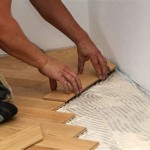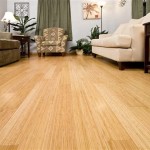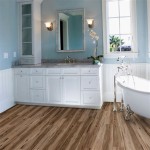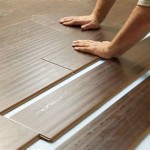Can You Mix Hardwood Flooring In A House?
The question of whether hardwood flooring can be mixed within a house is a common one for homeowners embarking on renovation projects or new construction. The answer is generally yes, but the execution requires careful planning and consideration to achieve a cohesive and aesthetically pleasing result. Mixing hardwood flooring effectively involves understanding various factors, including wood species, color variations, plank sizes, laying patterns, transitions, and overall design harmony.
Mixing different hardwood floors can add visual interest, define spaces, and even highlight specific architectural features. However, without proper planning, it can also lead to a disjointed and chaotic appearance. The key is to approach the process strategically, focusing on creating intentional contrasts and seamless connections between different flooring types.
Understanding the Key Considerations
Successfully mixing hardwood flooring requires attention to several important aspects. Neglecting these considerations can compromise the overall aesthetic and create visual disharmony within the home.
Wood Species and Color Variation: The species of wood chosen significantly impacts the color, grain pattern, and hardness of the flooring. Different wood species react differently to staining and finishing, resulting in a wide range of color options. For example, oak is known for its prominent grain and ability to accept various stains, while maple has a tighter grain and a lighter, more consistent color. When mixing hardwood floors, consider how the colors and grain patterns will interact. Opting for woods with complementary undertones, even if the shades differ, can create a more cohesive look. Conversely, combining woods with wildly contrasting colors and grain patterns can look jarring unless done intentionally to create a specific dramatic effect.
Plank Width and Length: The dimensions of hardwood planks can also play a crucial role in the overall design. Wide planks tend to create a more modern and open feel, while narrower planks can lend a more traditional or formal look. Mixing plank widths can add visual interest, but it's important to ensure that the widths relate harmoniously to the size and style of the rooms. For instance, using wide planks in a large, open-plan living area and narrower planks in adjacent hallways can help define the spaces while maintaining a continuous flow. Plank length is another factor. Random lengths are generally more desirable as they mimic the natural variation of wood and create a more authentic look. However, consistency in average plank length can also contribute to a sense of order and uniformity, especially when transitioning between different flooring types.
Finish and Sheen Levels: The finish applied to hardwood flooring not only protects the wood but also affects its appearance. Different finishes can alter the color and texture of the wood, ranging from matte and satin finishes that offer a more natural look to semi-gloss and high-gloss finishes that provide a more polished and reflective surface. When mixing hardwood floors, consider the sheen level of each floor. A significant difference in sheen can create a noticeable visual break, especially in adjacent rooms. Using a similar sheen level across different flooring types can help create a more unified look, even if the colors and species differ. Alternatively, varying the sheen level can be used strategically to highlight specific areas or create visual interest.
Strategies for Mixing Hardwood Flooring Successfully
There are several strategies to consider when mixing hardwood flooring to ensure a visually appealing and cohesive design. These strategies involve careful planning and execution to avoid a haphazard or disjointed result.
Define Zones and Transitions: One of the most effective ways to mix hardwood flooring is to use different types in different zones or rooms. This approach allows for distinct areas within the house to have their own character while still maintaining a sense of overall harmony. For example, using a darker, more durable wood like Brazilian cherry in high-traffic areas like hallways and entryways, and a lighter, more elegant wood like maple in living rooms and bedrooms. The key to successful zoning is creating seamless transitions between the different flooring types. This can be achieved through the use of transition strips, T-moldings, or flush transitions that create a smooth and visually appealing connection.
Utilize Borders and Inlays: Another technique is to incorporate borders or inlays using different hardwood species. This can add a touch of sophistication and visual interest to a room, while also tying together different flooring types. For example, a border of a darker wood around the perimeter of a room with a lighter wood floor can create a striking contrast and define the space. Inlays, such as geometric patterns or decorative motifs, can also be used to add a unique touch and create a focal point. When using borders or inlays, consider the scale and proportions of the room and the surrounding furnishings to ensure that the design elements are well-balanced and visually appealing.
Consider the Overall Design Style: The overall design style of the house should also be a major factor in the decision to mix hardwood flooring. Different design styles lend themselves to different approaches. For example, in a modern or contemporary home, mixing hardwood floors with clean lines and minimalist details can create a sophisticated and stylish look. In a traditional or rustic home, mixing hardwood floors with more natural variations and character can enhance the warmth and charm of the space. Consider the existing architectural features, color palette, and furnishings of the house when selecting and mixing hardwood floors to ensure that the overall design is cohesive and harmonious.
Avoiding Common Pitfalls
While mixing hardwood flooring can be a creative and effective way to enhance the aesthetic of a home, it's important to be aware of common pitfalls that can lead to disappointing results. Avoiding these mistakes can save time, money, and frustration.
Lack of Planning: One of the biggest mistakes is failing to plan the project thoroughly. Rushing into the selection and installation of different hardwood floors without considering the factors mentioned above can lead to a disjointed and unattractive result. It's essential to create a detailed plan that outlines the specific flooring types to be used in each area, the transitions between them, and the overall design aesthetic. This plan should also take into account the existing architectural features, color palette, and furnishings of the house.
Ignoring Undertones: Neglecting the undertones of different wood species can also result in a mismatched and unappealing look. Wood species have either warm (red, orange, yellow) or cool (gray, blue, green) undertones. Mixing woods with conflicting undertones can create a jarring effect. To avoid this, carefully consider the undertones of each wood species and choose options that complement each other. Using samples and comparing them side-by-side in the actual lighting of the room can help ensure that the colors and undertones work well together.
Poor Transitions: Poorly executed transitions between different flooring types can detract from the overall aesthetic of the home. Using mismatched transition strips, uneven surfaces, or abrupt changes in color or texture can create a visual break and make the transition look awkward. To avoid this, invest in high-quality transition strips that match the color and style of the flooring. Ensure that the surfaces are level and smooth before installing the transition strips. Consider using flush transitions for a more seamless look or incorporating decorative elements like borders or inlays to create a more gradual and visually appealing transition.
Mixing hardwood flooring successfully involves careful planning, attention to detail, and a good understanding of design principles. By considering the factors outlined above and avoiding common pitfalls, homeowners can create a visually stunning and cohesive space that reflects their personal style and enhances the overall value of their home. It is always recommended to consult with flooring professionals or interior designers to explore the possibilities and ensure a successful implementation.

Should Wood Floors Match Throughout The House Rhodium

Should Wood Floors Match Throughout The House Rhodium

Hardwood Flooring Trends Mixing Species T G
Can You Put 2 Diffe Wood Floors Next To Each Other Quora

Are There Wood Floors In Your House

Is Using 2 Diffe Wood Floors Ok From Hallway To Bedroom

How To Make Mixed Hardwood Flooring Look Amazing Elmwood Reclaimed Timber

Do Hardwood Floors Have To Match Diffe Color

Tips For Matching Wood Floors

Proof That It S Possible To Match Lvp Your Hardwood Floors
Related Posts

